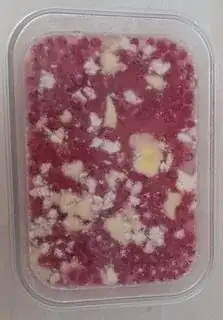I wanted to make a layered dessert. The idea was to have a flan layer on the bottom and a fruit jelly layer on top.
I first baked the flan, and had no problems there. Then I covered it evenly with a layer of redcurrant berries. Then I dissolved gelatine into peach compote liquid and poured it on top. The flan recipe I chose wasn't very flimsy, it had a high milk-to-cream ratio and whole eggs, which gives a somewhat firm custard when compared to recipes with more cream or yolks only.
I was extremely gentle in my pouring technique, doing it from almost no height, and slowly, in a gentle angle. The liquid fell mostly onto the berries, and not directly onto the flan. Nevertheless, the flan surface tore up, causing pieces of the flan to disperse in the jelly and float up. So, instead of a beautiful clear jelly with fruit floating in it, I ended up with a "dirty" looking dessert.
What could I have done to prevent this from happening?
I must admit that the flan was still quite warm from the oven (maybe half an hour out). The gelatinized liquid was at 50 C. Would it have been sufficient to keep it in the fridge overnight, or should I do something else too?

